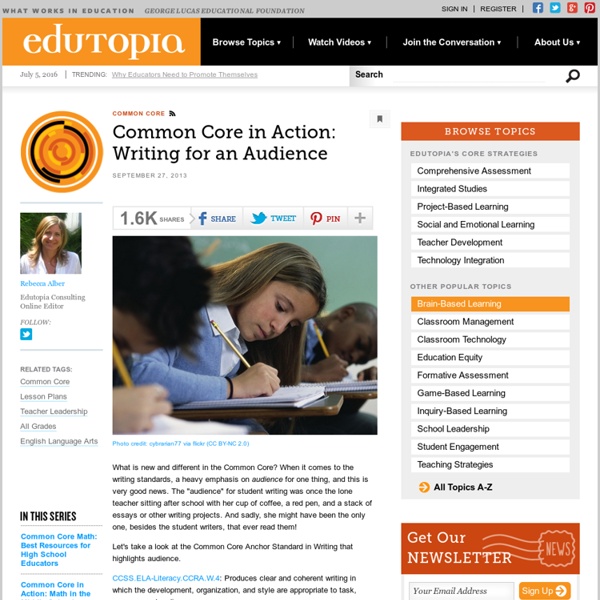d_mulder: @alicekeeler An ecard I made...
10 Mind Mapping Strategies For Teachers
10 Mind Mapping Strategies For Teachers by Andrea Leyden, examtime.com The adoption of Mind Maps in teaching has grown recently due to the benefits of using Mind Maps to learn and the availability of free online mind mapping software. Teachers have recognized the value of using Mind Maps to engage students, encourage creativity and, most importantly, teaching how to learn rather simply memorizing content. How do teachers harness the full power of Mind Mapping? Mind Mapping Strategies for Teachers Pre-class: Planning: Whether its lesson plans, design of your class curriculum for the school year or planning an assignment timeline, Mind Maps give you a clear and visual overview of what needs to be covered.Organizing: If you’re the type of person who regularly jots down ideas and thoughts, Mind Maps are the perfect tool to create structure and organization of a topic. In-class: Teaching: Online Mind Maps can be used in class to brainstorm and generate discussions. Outside class:
ELA Common Core Resources for Elementary Educators
How will the Common Core shift English-language arts learning in elementary school? Well, the transition to more nonfiction readings has certainly received the most attention, but that's just one subtle way. To help parents understand these shifts, we've compiled some of the best Common Core resources from around the Web. There are also plenty of useful resources for educators here too, from sample lessons and assessments, to classroom practice video series. With full implementation of the CCSS set for next fall, many nonprofits and publishers are racing to put together useful resources for parents, educators and students. Get to the Core Webinar Series: ASCD’s Get to the Core features insightful, engaging webinars on all things Common Core. see more see less
Five-Minute Film Festival: Digging Into the Common Core
It's been nearly two years since I first wrote up "Resources for Understanding the Common Core State Standards," Edutopia's roundup page for all things Common Core, and the demand for tools and resources only grows as we get deeper into implementation. Like any major (and mandated!) educational initiative, the Common Core State Standards (CCSS) have their fans and their detractors, but if you're in one of the 45+ states that have signed on, they are here to stay. I highly recommend reading an excellent recent opinion piece from The New York Times, by Charles M. Blow, "The Common Core and the Common Good," which provides a compelling and succinct summary of the potential problems and the opportunities around the Common Core. Edutopia's team of bloggers have been exploring every corner of the Common Core. Video Playlist: Digging Into the Common Core State Standards Keep watching the player below to see the rest of the playlist, or view it on YouTube. see more see less
MrsStraitsClass: #worksheetsdontwork #edchat...
360 Degree Aerial Panorama | 3D Virtual Tours Around the World | Photos of the Most Interesting Places on the Earth | AirPano.com
The State of the Common Core
Millions of teachers and thousands of districts in 45 states are currently undergoing a sea change in the way that they teach and assess students. The new Common Core Standards for learning have been phased into states and districts since 2010, and the digitized Common Core Assessments are scheduled to deploy in states that have adopted them as early as the 2014-2015 school year. Map of State Adoption of Common Core Assessments (Oct. 2013) Note: Utah withdrew from Smarter Balanced, but will use the test until further notice. Credit: Edutopia Comparing Methods Six consortia, funded by the U.S. Total testing time for Smarter Balanced is 55 hours over several multi-day testing sessions in grades 3-8 and grade 11. Source: Center for K-12 Assessment & Performance Management at ETS (2013)1, and ACT, Inc. (2013). The Road Ahead for Assessment The Educational Testing Service has analyzed scenarios in which a multitude of tests claim to measure the Common Core standards. The New York Case Study Notes
Primary_Ed: A simple & effective...
Using the iDiary for Kids App As A Thinking Book
My classroom, for the most part is paperless. My students do not have notebooks, or binders, or folders that contain copious amounts of paper that will end up in the recycle bin as soon as they are able to bring it home. My students sit at desks, however, they rarely use the inside of them. My students all have a book box that contains the books they are currently reading and a writer's workshop folder that contains a few pieces of writing they are currently working on. Once students have filled out the preferences page and saved it, they can enter the app, and choose the book they want to work in (if you have more than one student using the iPad or the student has more than 1 book you can have multiple books on this page). The student chooses their book and enters their password. A great addition to this app is when the student starts to type, the book automatically enters a time stamp to the page in the column. How did I introduce this book to my students, you ask?
Home
dandesignthink: hot-thinking poster for RWBA,...



